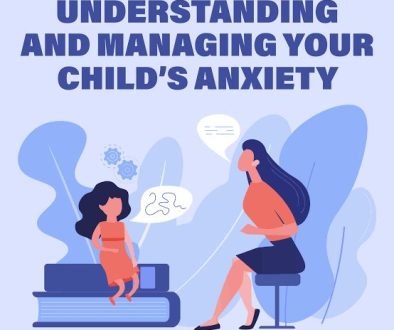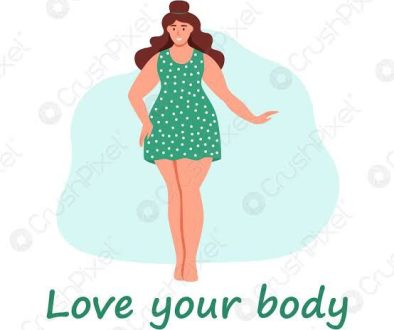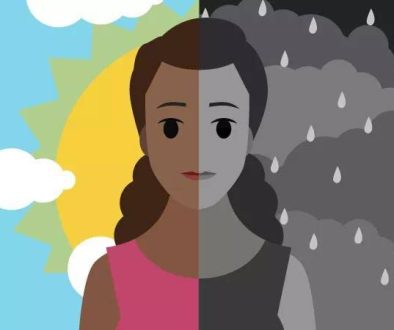Understanding ADHD: Symptoms, Causes, and Treatment
Attention-deficit/hyperactivity disorder (ADHD) is one of the most common neurodevelopmental disorders, affecting both children and adults. Characterized by difficulties with attention, hyperactivity, and impulsivity, ADHD can significantly impact a person’s academic, professional, and social life. However, with the right diagnosis and treatment, individuals with ADHD can manage their symptoms and lead successful, fulfilling lives.
This article explores the symptoms, causes, diagnosis, and treatment options for ADHD, as well as strategies for living well with the condition.
What is ADHD?
ADHD is a neurodevelopmental disorder that typically begins in childhood and can continue into adulthood. It is characterized by a pattern of inattention, hyperactivity, and impulsivity that interferes with daily functioning. ADHD affects approximately 5-7% of children worldwide, with symptoms often persisting into adulthood for about 60% of those diagnosed in childhood.
While the exact causes of ADHD are not fully understood, it is believed to result from a combination of genetic, environmental, and neurological factors. ADHD manifests in varying degrees of severity and is categorized into three types based on the dominant symptoms: inattentive, hyperactive-impulsive, and combined.
Types of ADHD
1. Predominantly Inattentive Presentation: Individuals with this type of ADHD primarily struggle with paying attention and staying focused. Common signs include difficulty following instructions, trouble organizing tasks, and frequent forgetfulness. These individuals are often mistaken for being “daydreamers” or lazy because they may seem disengaged.
2. Predominantly Hyperactive-Impulsive Presentation: This type is characterized by excessive movement, restlessness, and impulsive behavior. Individuals may fidget, have difficulty sitting still, or act without thinking through consequences. Hyperactive-impulsive ADHD is often noticed in young children, who may have trouble remaining seated in class or waiting their turn during games.
3. Combined Presentation: The most common form of ADHD, combined presentation, involves symptoms of both inattention and hyperactivity-impulsivity. Individuals with this type struggle with a mix of difficulty focusing and controlling impulses, which can affect various areas of life.
Symptoms of ADHD
The symptoms of ADHD fall into two main categories: inattention and hyperactivity-impulsivity. These symptoms can vary in intensity and impact depending on the individual.
Inattention Symptoms
– Difficulty paying close attention to details, leading to careless mistakes
– Trouble sustaining attention in tasks or activities
– Seeming not to listen when spoken to directly
– Difficulty organizing tasks and activities
– Avoiding or disliking tasks that require sustained mental effort
– Losing things needed for tasks, such as books or keys
– Becoming easily distracted by unrelated stimuli
– Forgetfulness in daily activities
Hyperactivity-Impulsivity Symptoms
-Fidgeting or tapping hands or feet
– Inability to stay seated in situations where it is expected (e.g., in class)
– Running or climbing in inappropriate situations
– Inability to play quietly
– Talking excessively or blurting out answers before questions are completed
– Difficulty waiting for one’s turn
– Interrupting or intruding on others during conversations or activities
Causes of ADHD
The exact causes of ADHD are not fully understood, but research suggests that multiple factors contribute to its development:
1. Genetics: ADHD tends to run in families, indicating a strong genetic component. Studies show that individuals with a close relative who has ADHD are more likely to develop the disorder.
2. Brain Structure and Function: Neuroimaging studies have shown differences in the size and activity levels of certain areas of the brain, particularly those involved in attention, impulse control, and executive function. Lower levels of neurotransmitters like dopamine may also contribute to ADHD symptoms.
3. Prenatal and Environmental Factors: Factors such as maternal smoking, alcohol consumption, or exposure to toxins during pregnancy have been linked to a higher risk of ADHD in children. Low birth weight, premature birth, and exposure to environmental toxins like lead during early childhood may also increase the likelihood of developing ADHD.
4. Brain Injury: In some cases, traumatic brain injuries, particularly those that affect the frontal lobe, can result in symptoms resembling ADHD. However, this is less common compared to genetic and environmental factors.
5. Diet and Nutrition: While diet does not cause ADHD, some research suggests that certain nutritional deficiencies or sensitivities to food additives may exacerbate symptoms in some individuals. This includes sensitivities to artificial coloring, preservatives, and sugars, though more research is needed to fully understand the relationship between diet and ADHD.
Diagnosis of ADHD
Diagnosing ADHD involves a comprehensive evaluation, as there is no single test to determine its presence. Diagnosis typically begins in childhood, though some people are not diagnosed until adulthood when symptoms become more apparent or disruptive. The process usually involves the following steps:
1. Clinical Evaluation: A healthcare provider, such as a pediatrician, psychiatrist, or psychologist, will review the individual’s medical history, developmental milestones, and behavioral patterns. This often involves gathering information from multiple sources, including parents, teachers, and sometimes employers.
2. Behavioral Assessment: The healthcare provider may use standardized questionnaires or behavior rating scales, which are designed to evaluate the frequency and severity of ADHD-related behaviors across different environments (home, school, work).
3. Criteria from the DSM-5: The Diagnostic and Statistical Manual of Mental Disorders, Fifth Edition (DSM-5), outlines specific criteria for diagnosing ADHD. Symptoms must be present for at least six months, must occur in more than one setting (e.g., school and home), and must be inappropriate for the person’s developmental level. For adults, symptoms should have been present in childhood, even if undiagnosed at that time.
4. Ruling Out Other Conditions: ADHD can sometimes be confused with other conditions like anxiety, depression, learning disabilities, or sleep disorders. A thorough evaluation is necessary to rule out these other conditions or identify any co-existing disorders.
ADHD in Adults
While ADHD is often associated with children, many adults also live with the disorder, sometimes without realizing it. Symptoms may manifest differently in adults, often appearing as difficulties in managing time, organizing tasks, maintaining relationships, or handling stress.
Adults with ADHD may struggle with impulsive decision-making, forgetfulness, or frequent job changes. They might also experience emotional dysregulation, where they have difficulty managing emotions, leading to frustration, anger, or impatience.
Although ADHD does not “go away” in adulthood, many adults learn coping strategies or find treatment that helps them manage their symptoms more effectively.
Treatment for ADHD
ADHD is a lifelong condition, but with appropriate treatment, individuals can manage symptoms and lead successful lives. Treatment typically involves a combination of medication, behavioral therapy, and lifestyle changes.
1. Medication
–Stimulants: Stimulant medications, such as methylphenidate (Ritalin) and amphetamines (Adderall), are the most commonly prescribed treatments for ADHD. These drugs increase the levels of certain neurotransmitters in the brain, particularly dopamine and norepinephrine, which help improve focus, impulse control, and attention. Stimulants are effective in approximately 70-80% of individuals with ADHD.
–Non-Stimulants : For individuals who do not respond well to stimulants or experience side effects, non-stimulant medications like atomoxetine (Strattera) or guanfacine (Intuniv) can be used. These medications take longer to have an effect but can help manage symptoms without the risk of misuse that stimulants carry.
2. Behavioral Therapy
–Cognitive Behavioral Therapy (CBT): CBT is a widely used therapeutic approach for managing ADHD symptoms. It focuses on changing negative thought patterns and developing practical strategies for organization, time management, and impulse control. CBT can also help address co-occurring conditions like anxiety or depression.
–Parent Training and School Interventions: For children, behavioral interventions often involve training parents and teachers to use positive reinforcement and consistent consequences to manage behaviors. Schools may provide accommodations, such as extended time on tests, quiet environments for work, or organizational tools to help students with ADHD succeed academically.
3. Lifestyle Changes
–Routine and Structures: Creating a structured daily routine can help individuals with ADHD stay organized and reduce stress. Breaking tasks into smaller steps, using planners, and setting reminders are effective tools for managing time and staying focused.
–Exercise: Regular physical activity can help reduce symptoms of ADHD by improving mood, attention, and energy levels. Exercise increases dopamine and serotonin levels, which help with focus and emotional regulation.
–Healthy Diet: While diet does not cure ADHD, maintaining a balanced diet with adequate nutrients—especially omega-3 fatty acids—can support brain function. Some individuals may benefit from avoiding processed foods or additives that exacerbate symptoms.
–Sleep: Getting enough quality sleep is essential for managing ADHD symptoms. Establishing a consistent bedtime routine, reducing screen time before bed, and creating a restful sleep environment can improve focus and emotional regulation.
Living with ADHD
Living with ADHD can be challenging, but many individuals with the disorder are highly creative, energetic, and capable of great success. Understanding how ADHD affects daily life and using strategies to manage its symptoms are key to thriving. For children, early intervention and support from parents and teachers can make a significant difference in their academic and social development.
Adults with ADHD can also lead fulfilling lives by seeking treatment, developing coping mechanisms, and advocating for themselves in work or personal settings. With the right combination of medication, therapy, and lifestyle changes, individuals with ADHD can manage their symptoms and achieve their goals.
In conclusion
ADHD is a complex disorder that affects millions of people worldwide, but with early diagnosis, proper treatment, and support, individuals with ADHD can thrive. While it can pose challenges in attention, organization, and impulse control, ADHD also brings strengths such as creativity, enthusiasm, and problem-solving skills. Managing ADHD requires a holistic approach, combining medication, therapy, and lifestyle adjustments to help individuals unlock their full potential and lead rewarding lives.



